Onion Diseases in New Mexico
CR 538
Revised by Stephanie Walker, Natalie P. Goldberg and Christopher Cramer
College of Agricultural, Consumer and Environmental Sciences, New Mexico State University
Authors: Respectively, Extension Vegetable Specialist and Extension Plant Pathologist, Department of Extension Plant Sciences, and Professor, Department of Plant and Environmental Sciences, all of New Mexico State University. (Print Friendly PDF)
Onions are susceptible to a number of diseases caused by fungi and bacteria. Disease severity is influenced by climate, crop rotations, drying and storage conditions, and disease control measures. The more important onion diseases in New Mexico are pink root (Pyrenochaeta terrestris), Fusarium basal rot (Fusarium oxysporum), Botrytis bulb rot (Botrytis spp.), black mold rot (Aspergillus niger), Iris yellow spot virus, and bacterial soft rots (Pectobacterium, Dickeya, and Burkholderia spp.). Most onion diseases begin on plants growing in the field and continue to develop on the bulbs during storage and transit, when symptoms become evident. Effective control of postharvest diseases begins with the understanding that these diseases originate in the field. Appropriate cultural practices, including crop rotations, removal of infected onion debris and culls, and proper cultivar selection, are essential for controlling onion diseases.
Fungal Diseases
Pink Root (Pyrenochaeta terrestris)
Although pink root disease, caused by the fungus Pyrenochaeta terrestris, has traditionally been considered a severe onion disease in southern New Mexico, the use of new resistant varieties has decreased its importance. Pink root rot is one of the few onion fungal diseases that infect only the roots and do not invade the bulb tissue. Symptoms include a root rot accompanied by a pink to purple discoloration of the roots (Figure 1). As root capacity is lost, the plants show symptoms of moisture deficit, including leaf tip burn and slow growth. The result is smaller bulbs and lower yields. However, marketability of bulbs is not affected, except for size. The fungus can cause some pink to purple discoloration on outer dry scales, most noticeable on white varieties, but the discoloration does not cause bulb rot problems. The optimum soil temperature for pink root infection is approximately 28°C (82°F), but infection occurs as low as 18°C (64°F). Symptoms appear about April 15, and the disease severity increases rapidly with increasing soil temperature. In New Mexico, the earlier maturing short day varieties are affected less severely than the spring planted intermediate and long day varieties. However, even short day onion losses can be severe if susceptible varieties are planted on infested fields. The effects of pink root are enhanced by drought or high levels of soluble salts in the soil. The source of inoculum is structures called microsclerotia that can live in the soil for many years. The fungus also maintains itself in soil by infecting other crops or weeds. Barley, corn, sorghum, tomatoes, melons, peas, and spinach are known hosts for P. terrestris. Crop rotation is not highly effective in controlling pink root because the fungus survives on alternate hosts, and the microsclerotia have a long-term survival. The best control is varietal resistance. Several varieties in each maturity group are partially to highly resistant. These varieties maintain greater root capacity and are less affected by the disease.
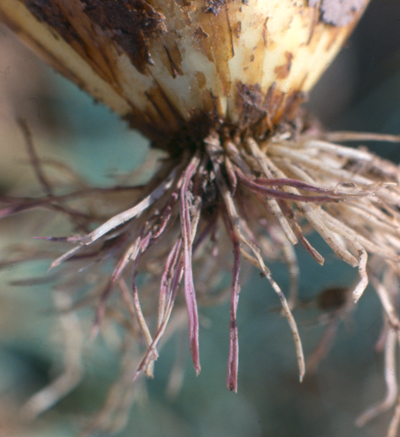
Figure 1. Pink root rot (Pyrenochaeta terrestris).
Fusarium Basal Plate Rot (Fusarium oxysporum f. sp. cepae)
This disease begins in the field and continues after harvest as storage rot. The fungus lives in the soil where it attacks roots, basal plates, and developing bulbs, often following bulb injury or bruising (Figure 2a). The pathogen spreads in the water or soil, or is carried on insects and equipment. Plants can become infected at any stage of development; however, above-ground symptoms are not apparent until after the roots and stem plate are already infected and decayed. Progressive yellowing and dieback of the leaf tips is usually apparent after the soil has warmed (Figure 2b). Bulbs infected in the field may develop a symptomatic white to pinkish mold during storage, although rot from secondary bacterial infection is more common. Infections that occur late in the season often are not detected at harvest and continue to progress during storage or shipment.

Figure 2a. Fusarium basal plate rot (Fusarium oxysporum f. sp. cepae).
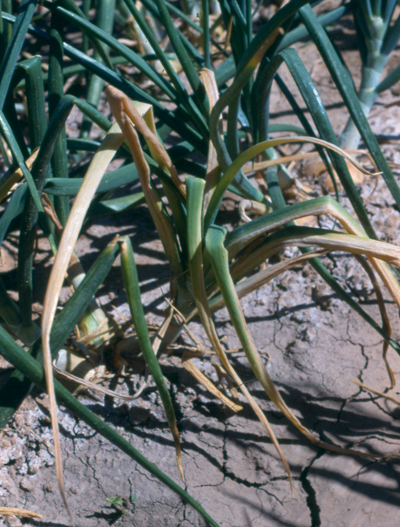
Figure 2b. Leaf yellowing and dieback from Fusarium basal plate rot.
Symptoms are reduced at storage temperatures between 8°C and 15°C (46-59°F). At 30°C (86°F) the tissues decay and dry rapidly. Fusarium basal plate rot is most severe in poorly drained fields where onions have been grown for several years without adequate crop rotation. Mechanical injuries should be avoided during harvesting and handling, and proper curing is recommended.
Botrytis Bulb and Neck Rot (Botrytis spp.)
In temperate onion growing regions, the Botrytis fungus causes neck rot during storage and is a major postharvest problem. However, the neck rot disease is less important in New Mexico than the bulb rot caused by this fungus in the field.
Botrytis bulb and neck rot occur more frequently during years with cool, moist spring conditions. Bulb rot symptoms begin in the field and can become severe during storage. Lesions begin as small, brown or gray, sunken lesions on the side or near the base of the bulb (Figure 3a). At times, gray mycelia can be seen growing in the lesions. As lesions expand, they become surrounded by large, brown discolored areas on the outer 2-3 scales (Figure 3b). Hard, dry reproductive structures called sclerotia often form on the scales. Sclerotia may be white at first, but turn black with age. Botrytis is a soil-borne fungus transmitted by infected bulbs or seed, or through wind-dispersed spores. The fungus overwinters on onion debris as spores or sclerotia.
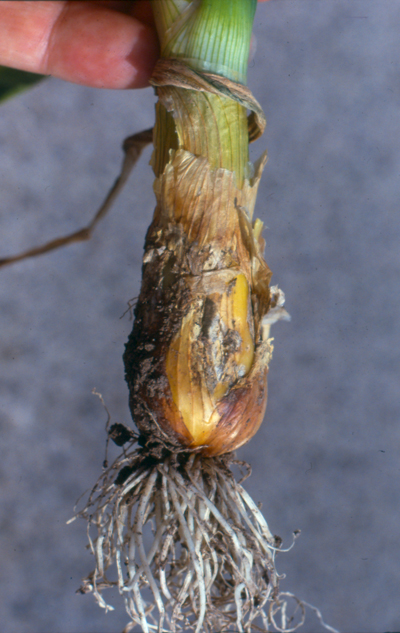
Figure 3a. Young onion with Botrytis bulb rot (Botrytis spp.).
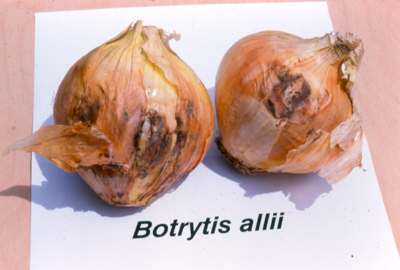
Figure 3b. Botrytis bulb rot (Botrytis allii.).
The neck rot disease is most prevalent in areas with cool, moist weather before and during harvest. The rot develops most rapidly between 15-20°C (59-68°F). Fungal growth slows greatly at temperatures below 3°C (37°F), but neck rot can continue to develop at 0°C (32°F) over several months of storage. Infection usually occurs through the necks of inadequately cured bulbs or through wounds made on other parts of the onion. The pathogen spreads rapidly down the infected scales but spreads slowly from scale to scale. Infected bulbs often show no neck rot symptoms until they have been in storage for 8-10 weeks. The first symptom is a water-soaked appearance and softening of infected scales around the neck of the bulb. Decayed tissues then become sunken and later turn grayish brown (Figure 4). A distinct margin surrounds the diseased area.

Figure 4. Botrytis neck rot (Botrytis spp.).
Control of neck rot depends greatly on favorable weather during maturing of the tops and on proper curing of neck tissues after harvest. Artificial curing is used in other regions to thoroughly dry onion necks before storage, but is not practiced in New Mexico.
Soil-Line Rot (Botrytis spp.)
Soil-line rot is another disease seen in the Southwest caused by the Botrytis fungus. Conditions conducive to Botrytis neck rot (i.e., cool, moist field conditions) also favor this disease. When present, the disease tends to be more severe on transplanted onions. Symptoms of soil-line rot include sunken lesions, with grayish green to black mold on or near the base of the foliage (Figure 5). Leaf dieback occurs, and plant growth is stunted. Practicing a 3-4 year crop rotation, ensuring thorough field sanitation, and using pathogen-free seed and transplants are critical to management of this disease.
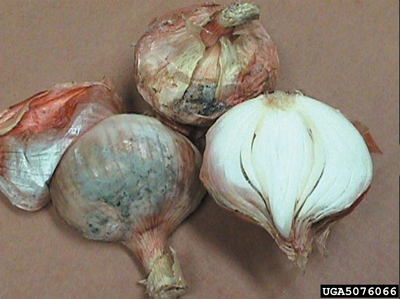
Figure 5. Soil-line rot (Botrytis spp). David B. Langston, University of Georgia, Bugwood.org
Black Mold (Aspergillus niger)
Black mold occurs during storage and transit on onions grown in hot climates such as New Mexico, Texas, and California. Infection spreads from bulb to bulb by direct contact, through bruises or wounds, by mechanical means, or by airborne spores. Aspergillus niger is a soil-borne fungus that can survive on plant debris in the soil. The main symptom is the presence of black spores on the surface or just beneath the dry outer scales (Figure 6). There usually are no apparent lesions, but there may be sunken, discolored areas below the black mold. In advanced stages of disease, the fungus produces enzymes that soften the onion bulb tissue, favoring infections by secondary bacterial organisms.
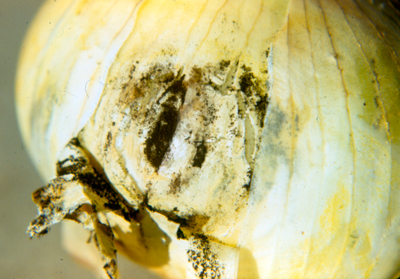
Figure 6. Black mold (Aspergillus niger).
High temperatures favor the growth of A. niger. Growth is most rapid at 35°C (95°F) and relatively slow at 13°C (55°F). Spores germinate well at 80-86% relative humidity. Black mold control is difficult in New Mexico where temperatures are high during onion growth, harvest, and storage. However, bulbs should be protected from moisture during and after harvest to prevent black mold development. Prompt, thorough curing and good ventilation during storage are also recommended.
Purple Blotch (Alternaria porri)
The purple blotch fungus causes a disease of both onion leaves and bulbs. This disease is not common in New Mexico, and only becomes important during years of high rainfall during the growing season. The disease appears on leaves as small, whitish spots with purple centers (Figure 7). The lesions enlarge and can be covered with black, powdery spores. The diseased area can eventually girdle the leaf. On the bulb, the purple blotch fungus secretes a red pigment; affected scale tissue gradually turns a wine red. The diseased bulb can completely rot under wet conditions. Purple blotch can be prevented from spreading in the field by spraying a fungicide when the disease is first noticed following a rain.
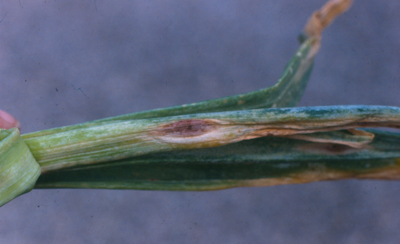
Figure 7. Purple blotch (Alternaria porri).
Powdery Mildew (Leveillula taurica)
Powdery mildew is a fungal disease that affects the leaves of susceptible plants. The pathogen, Leveillula taurica, has a wide host range, including many other crop plants and weeds. It survives on living plant tissue from one growing season to the next. The disease begins as circular to oblong shaped, white to pale yellow colored lesions on older leaves (Figure 8). As the disease progresses, a white, powdery growth covers the affected tissue. Although the disease has been found in New Mexico, to date it has not been known to cause significant damage or yield losses. As such, management strategies are usually not recommended. If the disease becomes severe or if it becomes a consistent problem, management strategies that include good sanitation practices (e.g., destruction of onion debris, volunteers, and weed hosts), crop rotation, and fungicides may be helpful in reducing the disease. Susceptibility varies among onion cultivars; however, damage caused by the fungus is not severe enough at this time to warrant recommendation of one variety over another. fungus is not severe enough at this time to warrant recommendation of one variety over another.
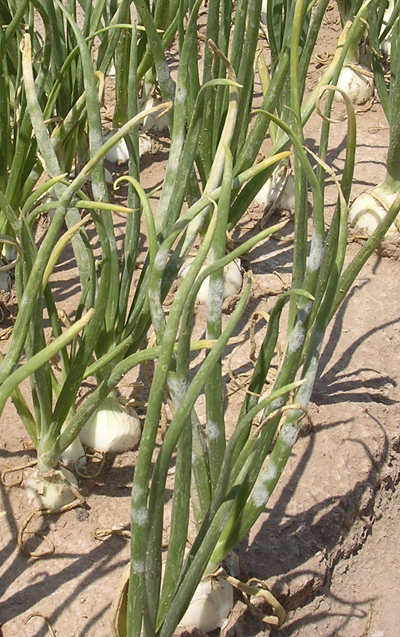
Figure 8. Powdery mildew on leaves (Leveillula taurica).
Viral Disease
Iris Yellow Spot Virus
Iris yellow spot virus (IYSV) was first discovered in New Mexico in 2002, and is considered an emerging or re-emerging pathogen in the United States. The virus is a tospovirus, closely related to two serious viral diseases: tomato spotted wilt virus and impatiens necrotic spot virus. In addition to onions, the disease also affects garlic (Allium sativum), iris (Iris spp.), and lisianthus (Eustoma grandiflorum). Weed hosts include jimsonweed (Datura stramonium), tobacco (Nicotiana spp.), and redroot pigweed (Amaranthus retroflexus).
Iris yellow spot virus typically does not kill plants; however, the virus reduces plant vigor and bulb size. Onions grown for seed will have reduced seed yield and quality. Additionally, the virus weakens plants, making them more susceptible to other diseases, pests, and environmental stresses. The severity of the disease depends on the plant's overall health at the time of infection. Otherwise healthy plants may show few symptoms and maintain decent growth. Plants under environmental or cultural stress may show severe symptoms resulting in significant economic losses.
Plants infected with IYSV will have characteristic yellow to straw colored lesions (Figure 9a). Lesions may be more or less round or diamond shaped, with or without a necrotic center. Lesions will appear on both the seed stalk and the leaves. Seed stalks may swell at the point of infection. Late in the season, infected seed stalks and leaves will lodge (Figure 9b). New growth that develops from infected bulbs is twisted and deformed.
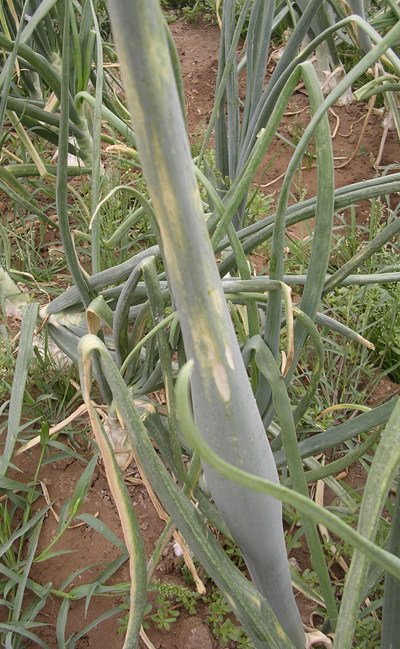
Figure 9a. Iris yellow spot virus lesions.
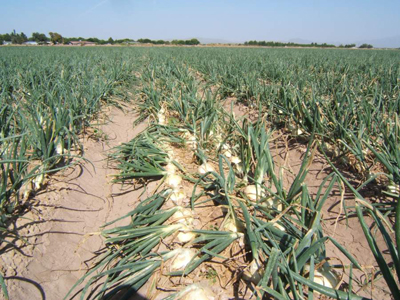
Figure 9b. Lodged stalks and leaves in onion field with Iris yellow spot virus. Jose A. "Buddy" Viramontes, Ag Market Resources
The only known vector of the disease is onion thrips (Thrips tabaci). Other common thrips species, such as western flower thrips (Frankliniella occidentalis), do not transmit the virus. The virus is transmitted by both larvae and adults, but only larvae can acquire the virus from infected plants. Virus transmission is persistent; once a thrips has acquired the virus, it can transmit the virus for the remainder of its lifetime. The disease has a potential to spread rapidly in fields with large numbers of infected thrips. Distribution of infected plants in the field will be associated with the feeding activity of the disease vector. In many cases, the damage is first noticed on field edges, in areas of stressed plants, or in locations with thin plant stands. The virus is not seed-borne. Likewise, the virus does not survive in soil and is not spread by physical contact. Infected bulbs allowed to survive as volunteers are a source of inoculum for new onion crops in subsequent years.
Once plants are infected with IYSV, there is no cure. Infected plants should be removed and destroyed, along with cull piles and volunteers. Maintaining good cultural management practices will help to reduce stress on the plants, thus lessening the disease's effect. Although no cultivars are known to be resistant to the virus, research has shown that cultivars vary in their susceptibility to both the virus and the thrips vector.
Bacterial Diseases
Bacterial Soft Rot (Pectobacterium carotovorum syn. Erwinia and Dickeya chrysanthemi syn. Erwinia)
Bacterial soft rot is a major postharvest disease of onion bulbs, and causes serious problems for New Mexico growers and packers. While several types of bacteria are associated with postharvest decay through secondary infection, only P. carotovorum and D. chrystanthemi produce pectolytic enzymes and can enter a bulb without preexisting injury to cause the specific disease known as "soft rot." Bacterial soft rot is most prevalent during the rainy months of July and August, or anytime when wet conditions occur before or during harvest.
Bacteria that cause soft rot can enter the neck tissues as onion plants approach maturity, directly invade the bulbs, or enter through wounds or abrasions (Figure 10a). Generally, the bacteria remain isolated in one or more infected scales, allowing surrounding scales to remain healthy. Infected tissues are glassy or water-soaked, pale yellowish to light brown (Figure 10b). The diseased scales later become soft, watery, and foul smelling.
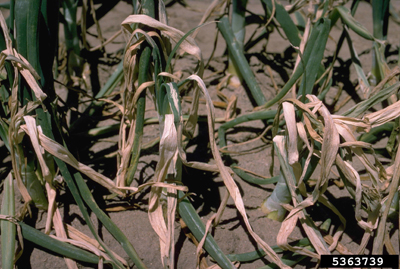
Figure 10a. Onion plants infected with bacterial soft rot (Pectobacterium carotovorum subsp. carotovorum). Howard F. Schwartz, Colorado State University, Bugwood.org
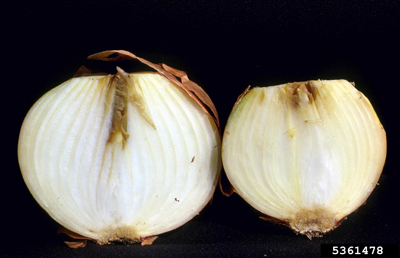
Figure 10b. Mature onion bulbs infected with bacterial soft rot (Pectobacterium carotovorum subsp. carotovorum). Howard F. Schwartz, Colorado State University, Bugwood.org
Although these bacteria can directly enter plant tissue, existing wounds may intensify the infection rate. The pathogen also requires moisture to infect plant tissues. Therefore, susceptibility increases if bulbs have mechanical injuries, sunscald, or bruises, especially when stored under warm, humid conditions. Fungicide applications in the field will not effectively control bacterial diseases. For control, the onion neck tissues should be fully mature and dry before harvesting. Artificial drying may be the best method to control bacterial soft rot, especially when onions are harvested wet. Bruising should be avoided during harvest and packing, and storage sheds must have adequate ventilation to avoid moisture on bulb surfaces.
Sour Skin (Burkholderia cepacia syn. Pseudomonas)
Sour skin is a scale rot of onion bulbs accelerated by excessive water and nitrogen before harvest, overmaturity, wounding, moist conditions at harvest, and temperatures over 30°C (85°F). The bacteria can enter the plant through wounds in young leaves and progress down the leaf tissue to rot the bulb scales. Infected leaves develop a light brown, watery rot in the onion neck. Infected scales are slimy and yellow, and the upper portion of the bulb can shrink (Figure 11). Fungi and yeast may be secondary invaders, contributing to the vinegar odor accompanying the disease.
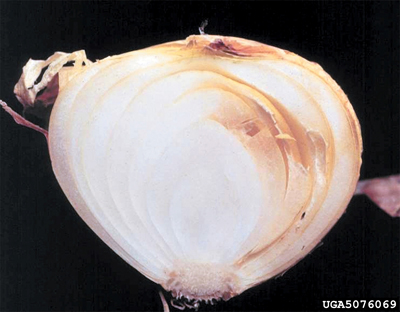
Figure 11. Mature onion bulb infected with sour skin (Burkholderia cepacia syn. Pseudomonas). David B. Langston, University of Georgia, Bugwood.org
The sour skin bacterium can also enter the onion bulb during field topping, especially during periods of wet weather. Dry field conditions before and during harvest help prevent the spread of bacterial diseases. Also, bacteria can be easily spread on unsanitary tools and clippers.
There is no evidence that the disease spreads between onions in storage. B. cepacia is a soil-borne bacterium, present in decaying plant tissue and easily spread through irrigation water. No resistant varieties or chemical control measures are available, but overhead irrigation generally intensifies the disease more than furrow irrigation.
Slippery Skin (Burkholderia gladioli subsp. alliicola syn. Pseudomonas)
Intact onion bulbs with slippery skin can appear disease-free until they are cut open. However, the inner scales of diseased bulbs are brown and water-soaked, and the bulb turns soft and rotten (Figure 12). One indication of slippery skin is when the inner core slips out when pressure is applied to the base of the bulb. As with the sour skin disease, bacteria enter through the leaf tissue and the infection progresses down to the bulb tissue. Mature bulbs are highly susceptible to B. gladioli subsp. alliicola, and can rot entirely after 10 days at room temperature. Slippery skin (B. gladioli subsp. alliicola) can be differentiated from sour skin (B. cepacia) in that sour skin primarily attacks the outer fleshy scales. Both diseases are more prevalent in July and August after seasonal rains have begun.

Figure 12. Internal bulb rot caused by slippery skin (Burkholderia gladioli subsp. alliicola). Howard F. Schwartz, Colorado State University, Bugwood.org
Nematodes
The southern root-knot nematode (Meloidogyne incognita) can be a serious pest on onions grown in sandy soils under high temperatures. However, nematodes are generally considered minor onion pests compared to fungal and bacterial pathogens. Plants infected with root-knot nematodes have slow growth, reduced bulb enlargement, root proliferation, slight root galling and root deformity, and chlorotic leaves (Figure 13).
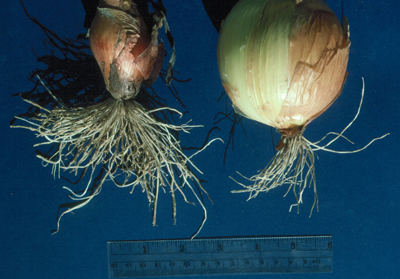
Figure 13. Damage caused by root-knot nematode (Meloidogyne incognita). Steve Thomas, New Mexico State University
General Recommendations for Managing Onion Diseases
Plant resistant cultivars on pink root-infested soil.
- Use crop rotation. The fungal and bacterial organisms that cause bulb diseases can build up in soils that are continually planted to onions.
- Remove volunteer onion plants and weeds in and around fields before planting new stands.
- Do not apply nitrogen within 4-5 weeks of harvest. Nitrogen stimulates growth of soil fungi and makes the onion tissue susceptible to infections.
- Stop irrigations 10-14 days before harvest. Wet soils at harvest time promote bulb infections. Withholding water before harvest encourages necks to dry and collapse.
- Do not clip tops too close to the bulb. Tops should be cut 1/2 to 3/4 inch from the bulb to allow proper drying and sealing of the neck.
- Practice good sanitation in the field and packing shed. Remove diseased, bruised, or sunburned bulbs during harvest, grading, and packing to avoid contamination of entire lots. Cull onions can carry disease organisms to the next crop and should be burned or buried immediately.
- Wash and sanitize all equipment and tillage implements regularly. Pathogen inoculum can be easily transferred from a diseased field to another location on tractors and implements. Clippers and other tools can also transmit disease organisms from bulb to bulb. Clippers should be frequently disinfected during harvest by dipping them into buckets of chlorinated water placed throughout the field.
- Keep bulbs dry and practice thorough curing. This is essential after harvest; wet or improperly cured onions are highly susceptible to fungal and bacterial rots. Onions are considered cured when the neck is tight and dry.
- Minimize mechanical damage of any kind. Most injuries occur during harvest, hauling, grading, packing, and shipment, but the injuries can take several days or weeks to become noticeable. Replace any old padding on grading and packing equipment with thick foam around all sharp corners, edges, and drop points.
- Keep storage and transit temperatures cool. The best storage temperature is 0-2°C (32-35°F); the best relative humidity is 65-70%. When onions are removed from cold storage during warm weather, moisture can condense on the surface and favor decay. In this case, onions should be warmed slowly over a 2- to 3-day period. If cold storage is not available, keep onion storage sheds well ventilated.
Original authors: Marisa Wall, assistant professor of horticulture, Emroy Shannon, Extension plant pathologist, and Joe Corgan, professor of horticulture.
To find more resources for your business, home, or family, visit the College of Agricultural, Consumer and Environmental Sciences on the World Wide Web at pubs.nmsu.edu
Contents of publications may be freely reproduced for educational purposes. All other rights reserved. For permission to use publications for other purposes, contact pubs@nmsu.edu or the authors listed on the publication.
New Mexico State University is an equal opportunity/affirmative action employer and educator. NMSU and the U.S. Department of Agriculture cooperating.
Revised and electronically distributed March 2009, Las Cruces, NM


